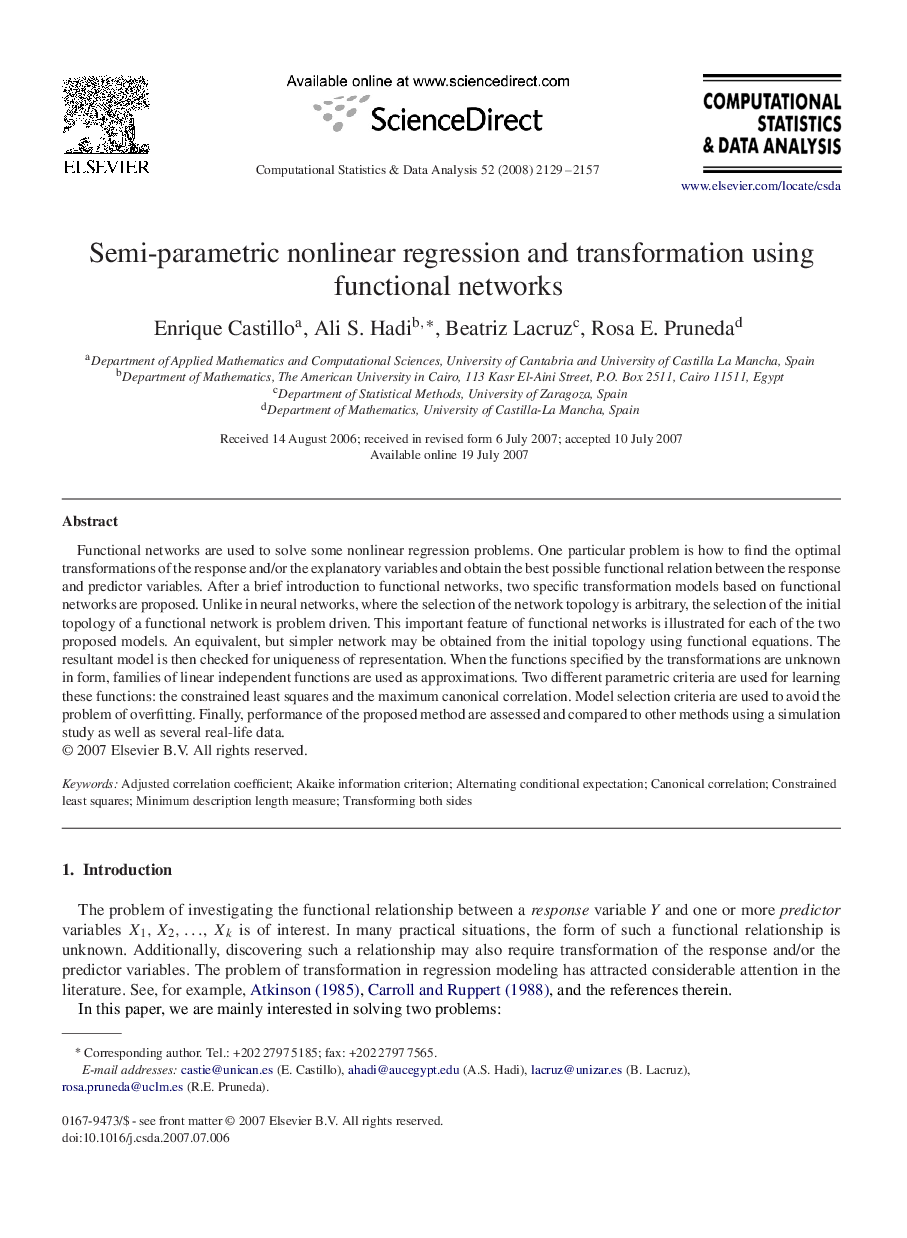| Article ID | Journal | Published Year | Pages | File Type |
|---|---|---|---|---|
| 417328 | Computational Statistics & Data Analysis | 2008 | 29 Pages |
Functional networks are used to solve some nonlinear regression problems. One particular problem is how to find the optimal transformations of the response and/or the explanatory variables and obtain the best possible functional relation between the response and predictor variables. After a brief introduction to functional networks, two specific transformation models based on functional networks are proposed. Unlike in neural networks, where the selection of the network topology is arbitrary, the selection of the initial topology of a functional network is problem driven. This important feature of functional networks is illustrated for each of the two proposed models. An equivalent, but simpler network may be obtained from the initial topology using functional equations. The resultant model is then checked for uniqueness of representation. When the functions specified by the transformations are unknown in form, families of linear independent functions are used as approximations. Two different parametric criteria are used for learning these functions: the constrained least squares and the maximum canonical correlation. Model selection criteria are used to avoid the problem of overfitting. Finally, performance of the proposed method are assessed and compared to other methods using a simulation study as well as several real-life data.
